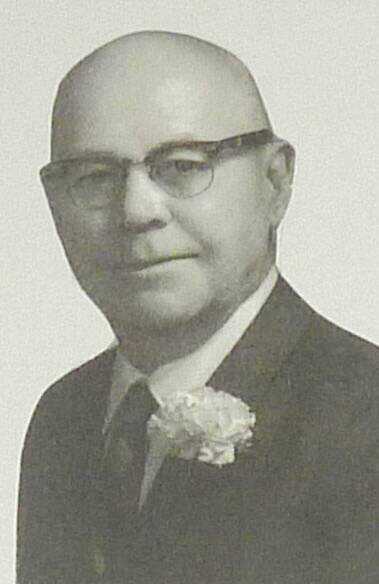Uncle Carl The Conductor

“All Abo-o-ard!”
Exciting words for us to hear. The train in which my family had just seated ourselves would be clanking forward shortly, leaving Poplar Bluff for St. Louis. The man outside our window dressed in his black conductor’s uniform and rounded hat calling these words was not just any ordinary conductor. He was Uncle Carl Hoefer, mother’s brother. Uncle Carl, Aunt Mazie and their nine children lived catty-cornered from us on Plum Street in Doniphan. In those years Uncle Carl worked the Missouri Pacific line between Poplar Bluff and St. Louis, going to the big city in the afternoon, returning south the next morning.
Uncle Carl’s first job with the railroad was as a brakeman when he was only a teenager. In those years, the path to becoming a conductor was by being a brakeman/switchman first. Nowadays one attends a school of instruction for this job. No previous experience with the railroad is needed.
During my pre-school years, Uncle Carl was a brakeman between Doniphan and Neelyville. About 3 o’clock every afternoon the train arriving from Neelyville whistled as it rounded a curve east of town. After he helped the engine turn around, ready for the morning’s trip to Neelyville, I would see Uncle Carl walk down Plum Street hill to home.
If I ask “Who runs the train?” my guess is that your answer will be “The engineer, of course.” True, but only partly. His job is the mechanics of making the gigantic locomotive start, travel at a certain speed, come to a stop, etc. However, the BOSS of the train is the conductor.
Conductors are most visible when they are helping passengers on and off the train, standing at the side of the train calling “Watch your step” or “All abo-o-ard” or walking the aisles helping with luggage and taking tickets.
Much of a conductor’s work is unseen to most people: ensuring the safety of the whole train and its passengers; keeping meticulous records; communication with other railroad employees. Great physical stamina is necessary to assist passengers on and off, lift luggage and be on one’s feet most of the day.
Rosie, youngest of Uncle Carl’s nine children remembers: “When we rode to/from St. Louis with him our seats were across the aisle from his work area which was a seat turned to the back. We were not allowed to bother him until his work was done. He made numerous trips through the train collecting tickets, checking on passengers, reminding them when their stop was up next and helping them prepare to disboard. He had regular passengers up and down the line with whom he became friends. He was well liked by passengers and his workers. Sometimes there would be a little gift from them such as cookies or garden produce.
“In 1963, after 40-plus years on the railroad, daddy retired. He didn’t want to travel much then. But after a few years of hunting and fishing, he began to enjoy trips to visit family members who no longer lived in Doniphan, which was most of us.”
Were those miles traveled by train? No. Automobile and plane, but no more train travel for him.
Uncle Carl’s 35 years of retirement were spent working in his food and flower gardens, playing fiddle, listening to country music, playing checkers, watching baseball games on TV and reading. He passed away in 1993, age 97.
During his years as brakeman between Doniphan and Neelyville, some of his experiences were unique to traveling on this 20-mile line. For instance, stories about the rabbit traps. Or the empty coffee cans. Or how rabbit food helped the locomotive resume traveling after it had been stopped. If you are curious about these, ask Julie Braschler at the Current River Heritage Museum. His uniform, other train memorabilia and my manuscript are on display there.
Excerpt from UNCLE CARL the CONDUCTOR
